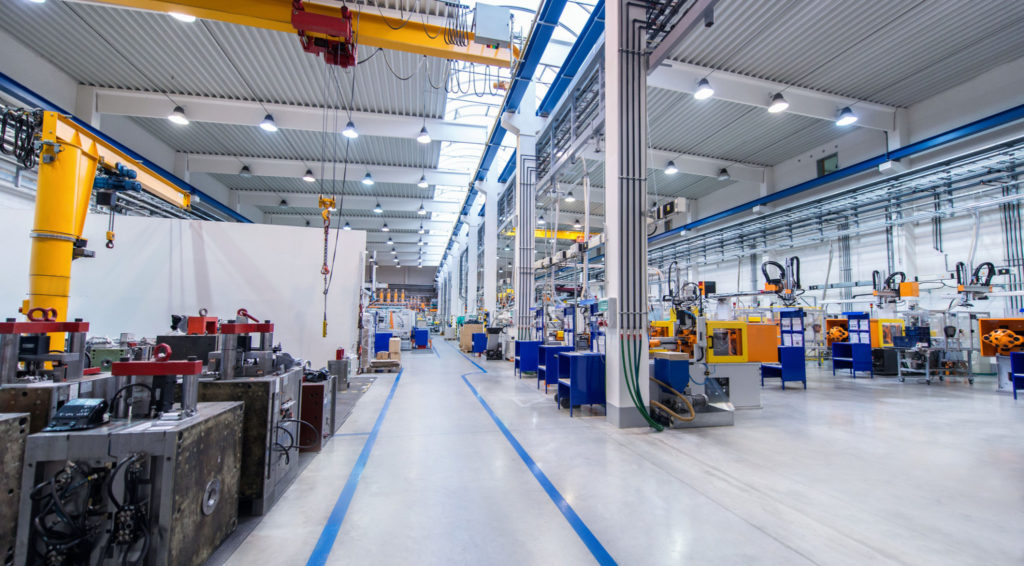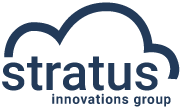What Is the Industrial Internet of Things (IIoT), and How Can It Drive Business Value?

An explosion of smart devices is occurring right now. You’ve probably heard of smart watches, smart thermostats, and smart refrigerators. You can even get smart shower heads.
But it’s not just personal and home appliances that are getting smarter. Business, manufacturing, and industrial devices are all becoming part of the internet of things to help improve quality, increase efficiency, and boost profits.
Below, we’ll outline the basics behind the industrial internet of things (IIoT) and talk about how your business can realize all the benefits of IIoT to drive revenue.
What Exactly Is the Internet of Things (IoT)?
The fundamental premise of IoT is that integrating data from a wide range of devices and other sources can fundamentally improve our lives by delivering new insights, improving efficiency and quality, and creating new opportunities.
A functioning, effective internet of things involves three core components:
IoT Essential #1: The Ability of Devices to Gather Data
Almost all the devices we use every day contain one or more sensors. Your thermostat measures the temperature of the room. Your fitness watch picks up everything from the impact of the steps you take and your elevation to how fast you move and your heart rate. Your vehicle has dozens of sensors that detect the air pressure in your tires, the amount of gas in your tank, the levels of oxygen in your exhaust, and much more.
After the sensors collect this data, they can communicate and transmit it.
IoT Essential #2: The Ability of Devices to Communicate
Devices collect data so they can communicate useful information. Your thermostat detects the temperature so it can “talk” with your HVAC system and tell it to start or stop heating or cooling. Your fitness watch collects data so it can work with an app to give you information about your health, your workouts, and more. Your vehicle collects data to do lots of things, like let you know when you need to inflate your tires or change your oil.
IoT devices need a way (whether wired, wirelessly, or otherwise) to communicate the data they collect. Some data gets transmitted to us, some gets sent to applications, and some goes out to other devices.
However, we don’t necessarily have access to all the data our devices gather, and few devices can access all the data from others. To truly realize the benefits of IoT, then, devices must work together.
IoT Essential #3: The Ability of Devices to Interact
By connecting devices with applications and other devices, the internet of things can deliver new insights to users. For example, by comparing your fitness watch’s data to everyone else’s, you can see how your activity level measures up. By connecting your watch to data about how active you should be to stay in good health, you can adjust your routine, or your device can alert you when you need to be more active.
You can even use the data to race someone, either in real time or asynchronously, from totally different locations, and your device can tell you if you need to increase your speed to keep up. Ideally, the result of all this interaction between fitness devices is healthier, happier, and more informed users.
Devices can also interact with each other to save us time and money. Consider so-called “smart” thermostats. They can learn how to tell when you’re home or away so they can save energy when you’re not around by communicating with your HVAC system. Also, if your thermostat can access information from other thermostats, it can determine when your HVAC system isn’t working as efficiently as it should and alert you.
Not only that, but a smart, connected thermostat can compare your energy usage to similar households and let you know that changing your desired temperature by a certain amount could result in significant savings. If your thermostat can receive and understand data directly from your HVAC system, it can tell you when something is broken and help you or a professional troubleshoot the problem. And if your thermostat can gather data from other devices about the temperature outside and the forecast, it could let you know when it’s a good idea to open the windows, close your shades, or take other actions that can reduce energy use.
How Does the Industrial Internet of Things (IIoT) Differ From IoT?
The same principles outlined above apply to the industrial internet of things (IIoT), but IIoT focuses primarily on devices for businesses and manufacturing.
Consider a typical plastic extrusion process:
- Plastic material goes into a hopper
- A long screw pushes the plastic through a heated barrel
- A screen filters any contaminants out of the plastic
- The heated, malleable plastic gets forced through a die that shapes it
- The plastic cools down, typically in a water bath
- The cooled plastic gets cut into sections of a specific length
At each of these stages, multiple complications can occur. The hopper can run out of material, the screw’s drive motor can fail, heating units can over- or under-heat the plastic, the screen can become clogged and require replacement, the die can become deformed, the cooling bath can shift in temperature, the cutting tool can go dull, and so on.
These issues cut into a manufacturer’s profitability in a variety of ways:
- Wasted material
- Machine downtime
- Costly repairs
- Reduced product quality
- Slowed processes
- And more
But what if all of the different devices involved in the extrusion process could communicate with one another? If the hopper was running low, it could send an alert to request more material, and it could slow down or stop the extrusion process to reduce wear and tear on the machines in the meantime. If the cutter knew the hopper was running low, it could send a signal back to ensure that the right amount of material got loaded into the extruder. And if any device recognized the product was in danger of failing a quality check, the device could send out an alert and halt the process to minimize waste.
What Is the Real Business Value of IIoT?
IIoT can do more than just optimize the operation of a single device or manufacturing line. What if we take the possibilities a step further and connect this single extruder line with others? What if these machines connect with all others that use the same plastic source material? What if all those devices could connect with your inventory database? And what if they all received data from other factories in other locations?
Now imagine that your manufacturing devices not only communicate with each other but also send all their data to a central hub in the cloud. There, the data gets instantaneously processed and becomes accessible to anyone who has an internet connection and the property security credentials.
From workers on the line to executives in the C-suite, whether they are in the same building or on a different continent, everyone at your business can have a fully integrated view of your operations.
The true value of IIoT is that it can:
- Increase process efficiency
- Improve quality
- Allow you to provide better service
- Help with troubleshooting and maintenance
- Improve safety
- Reduce costs
- Increase productivity
- And more
Some manufacturers are even creating brand new IIoT business models and revenue streams. For example, manufacturers are utilizing equipment-as-a-service (EaaS) models to drive new revenue, and they’re taking advantage of a fully integrated IIoT system to maximize efficiency through preventive maintenance, predictive maintenance, and all the other benefits mentioned above.
What Are the Major Challenges of Implementing IIoT?
IIoT offers many potential benefits, but implementing it involves plenty of challenges. For example:
- Collecting and securing different types of data from a wide variety of sources
- Processing an enormous volume of data in real time
- Providing secure access to users
- Displaying data in a user-friendly way that provides actionable insights
However, with a comprehensive high-level data strategy, your business can easily overcome these challenges and generate lucrative opportunities.
Stratus Innovations Group Can Help Your Business Realize the Benefits of the Industrial Internet of Things
You don’t need to reinvent the wheel and build your IIoT infrastructure from the ground up. With our Intelligent Factory Solution Offering, Stratus Innovations Group has helped businesses in the United States and around the world realize the promise of industrial IoT to drive new service revenue streams to complement their device sales.
Our team of experts at Stratus Innovations Group can help you at every stage of IIoT operations:
- Collecting data from virtually any source, including devices with diverse protocols, HMIs, controllers, and more via our IoT Protocol Gateway AdapterTM software asset that allows you to quickly have your devices communicating to a centralized IoT hub.
- Processing data in real-time using the Microsoft Azure cloud
- Developing a customized platform to provide valuable insights for everyone from workers on the line to executives at your headquarters
To find out how we can help your business, call us toll-free at 844-561-6721 or fill out our simple online contact form.
